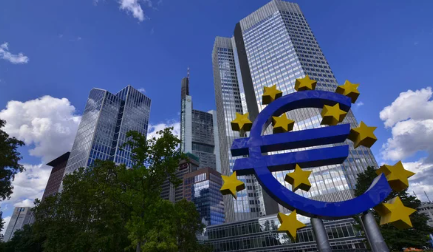
Economics & Growth | Europe | Monetary Policy & Inflation | Rates

Economics & Growth | Europe | Monetary Policy & Inflation | Rates
This article is only available to Macro Hive subscribers. Sign-up to receive world-class macro analysis with a daily curated newsletter, podcast, original content from award-winning researchers, cross market strategy, equity insights, trade ideas, crypto flow frameworks, academic paper summaries, explanation and analysis of market-moving events, community investor chat room, and more.
We expect the ECB will keep its interest rate policy unchanged at its policy meeting on 14 December (deposit rate at 4.0%). The tone will likely shift to consistent with Schnabel’s recent speech: that inflation has undershot, but it is too early to declare victory, and that while hikes are probably done, cuts are not imminent.
Otherwise, we expect:
The market is already pricing 38bp of cuts by April, only a short way from being fully priced for a cut in both March and April (the lower limit of reasonability in our view, Chart 1). Unless there is a strong change in tone from the ECB (something along the lines of looking to ease soon, or rates being too high currently), this looks like a good position to fade, especially given that at least some of this dovishness seems to have been driven by expectations on the Fed, which itself seems strongly overdone (Chart 2).
The ECB has shifted significantly more dovish in the last few weeks. Schnabel’s most recent comments were probably the most important aspect of this. In brief, her comments were:
The market has (probably rightly) made a lot out of the change in tone from probably the most important hawk at the ECB. However, there are always nuances to the situation. We recall that the market was badly wrong-footed at the end of August by reading too much into Schnabel’s comments when she gave a more balanced outlook (the outcome, it turned out of a general agreement not to give hints one way or another on next policy move). There is always a risk of similar misinterpretation.
It feels like Lagarde leans a lot on Schnabel’s opinion, and it seems likely that her comments will roughly reflect the above at the presser. However, first and foremost it seems unlikely that she will want to give forward guidance, and there are data related issues with cutting in April or earlier:
The ECB will need to downgrade their expectations for growth and inflation (Chart 7). 2023 GDP growth is probably c.0.2-0.3ppt lower than it was in September (+ 0.7%), with the possibility of an even larger downgrade in 2024 (Sep: +1.0%). Meanwhile, in core inflation it is highly likely they will drop the 2023 forecast by at least 0.1ppt (Sep: +5.1%), with probably a return to 2% or lower in 2025. A dovish outturn would be a signal that inflation could reach target in 2024. At this stage we consider this a relatively low probability given the risk that the inflation picture does not look quite as rosy in a few months. That said, the ECB have not been averse to sharply changing key inputs back and forth (as per their unemployment forecasts, Chart 8).
Despite the more dovish tone in rate policy, talk around the ending of PEPP reinvestments continues to gain ground. In fact, if the hawks think hike-talk has no legs, they may step more strongly into demanding a PEPP winddown.
Lagarde recently noted in testimony to the EU parliament that discussion on PEPP reinvestments; ends would occur in the “not too distant future”, and that it would gradually reduce investments. We think it is reasonable for discussions to begin at this week’s meeting. There is little expectation for details now though (the policy rate framework review which will determine ultimate balance sheet size is not due to conclude until Spring). A H1 partial winddown in reinvestments, with a full end to reinvestments in early H2 would make sense in our view.
We have previously covered the market effects of an end to PEPP reinvestments. In brief, while such a policy would probably have the greatest direct net-supply effect on German bonds, it has implications for TPI’s (the ECB’s first port of call for fighting spread widening) effectiveness and would probably drive a bear-widening in EGB periphery bonds.
Given all of the above, unless there is a serious dovish shift in tone, we see growing value in fading March cuts priced (by which point the ECB will still not have a clear picture on Q1 inflation) and would watch for an opportunity to fade April cuts too. Given the room for surprises we will revisit these ideas post-ECB.
The direction of travel in PEPP (which is a separate discussion to that of depo rate policy) seems more certain, and is likely to continue in its current trajectory. This is likely to continue supporting EUR credit spread wideners (we like 10Y BTP/Bund wideners and 5Y KfW/Bund wideners).
Spring sale - Prime Membership only £3 for 3 months! Get trade ideas and macro insights now
Your subscription has been successfully canceled.
Discount Applied - Your subscription has now updated with Coupon and from next payment Discount will be applied.